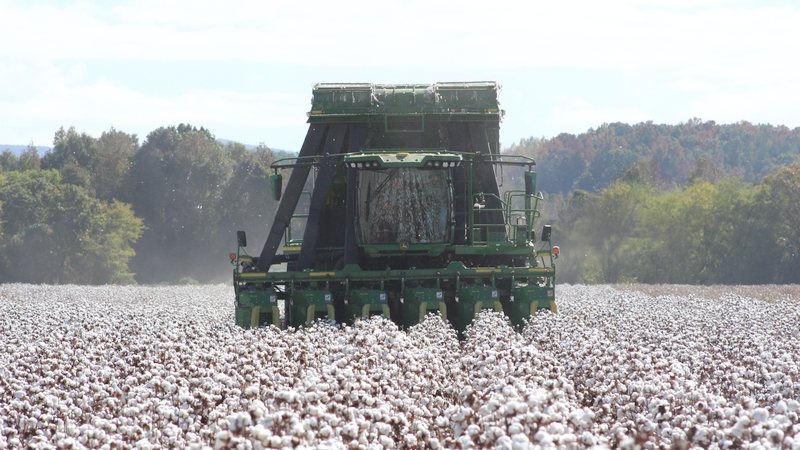Focus Shifts to Production as Cotton Prices Falter
The cotton market suffered through another week of mad cow disease as the new crop December contract fell to a low of 77.26 cents before recovering, settling the week at 77.55. The old crop May contract settled the week at 78.69 cents, but that contract delivery period begins next week.
The upcoming spot month, July, did settle above 80 cents, at 81.02, but was one of only three contracts on the Board that closed above 80 cents. The other two were the May 2025 contract and the July 2025 contract. The final month on the Board is the May 2026 contract and its settlement was 78.46 cents.
The October 2024 contract settled at 78.57. July should be expected to trade at least that low. Price support for the December contract is all the way down to the 74-75 cent area, but the near-term price will trade in sympathy with the July contract for at least another month.
The old crop July contract, as it has, will continue to strictly follow demand news, none of which has been good for the past few months. Economic news including inflation, real wage declines, home prices, and home sales – all of which are highly correlated with apparel purchases – shows little if any positive improvement over the past few months. In fact, there has been deterioration.
World trade in cotton has slightly improved as prices moved into and through the mid-80s and fell into the 70s. However, the improved demand is very slight and does not predict an increase in demand. While improvement in trade was to be expected given the significant drop in prices, most of the improved demand is being absorbed by foreign growths.
The cotton on-call statistics fail to support any bullish attitude for the market. In fact, the numbers suggest the bearishness the market is experiencing, and that it should be expected to continue. The ratio of on-call sales for old crop is only slightly bearish, about 5 to 1. However, the ratio for new crop is overwhelmingly bearish at just over 1 to 2.
China will continue to buy U.S. cotton as current prices are well below the cost of production in China. Thus, they will build their state reserve program, and this will be mildly supportive of the July contract.
As the market transfers its attention to the new crop, Mother Nature’s gift of adequate moisture becomes critical. The South Texas crop currently looks as if it will see record yields, just as it did at this time last year. However, last year at this time what looked like a 3-bale per acre crop, or better, turned out to be a 2-bale per acre crop and less. Thus, almost the entire growing season is still in front of the crop.
Nevertheless, the market sees that South Texas will only need one or two adequate rains to harvest a 3-bale per acre crop. Subsoil moisture is adequate, but the crop will still need at least three inches of rain in total.
Other regions of the Southwest have the planting moisture they need but more will be needed for good crop development. However, the rainy season stretches until June, so the region has time to receive timely rains…and the Memorial Day rains always come (if not, the phrase “crop disaster” surfaces). While the region has better subsoil conditions than it had last year at this time, tomorrow is the most important day for crop progress.
The market sees South Texas as it is now and presumes that the entire Southwest will have an excellent crop – thus, the selloff in December futures down near the 77-cent area and the potential to see 74 cents by June.
Too, do not underestimate the effect on demand of the bearishness associated with the general economic conditions across not only the U.S. but the world. The International Monetary Fund warned this week that U.S. debt was getting dangerously close to damaging the entire world economy. Organizations are well known policy wonks, but their dependence on the U.S. Treasury for funds to lend countries in distress has caused the world’s central bankers to take notice.
The poor economic health of the U.S. consumer will continue to haunt the demand for cotton. Nevertheless, the single most important measure by which to judge market prices will be the growing conditions across the northern hemisphere, and especially in the American Southwest in the coming 45-60 days. World carryover is barely adequate. Thus, world production prospects will dictate market activity in the coming weeks.
It was thought the July contract could challenge the 86-87 cent level again. The 84-cent level will likely hold any price advance. The mid-to-high 70s appears to be the expected trading range.
Give a gift of cotton today.








